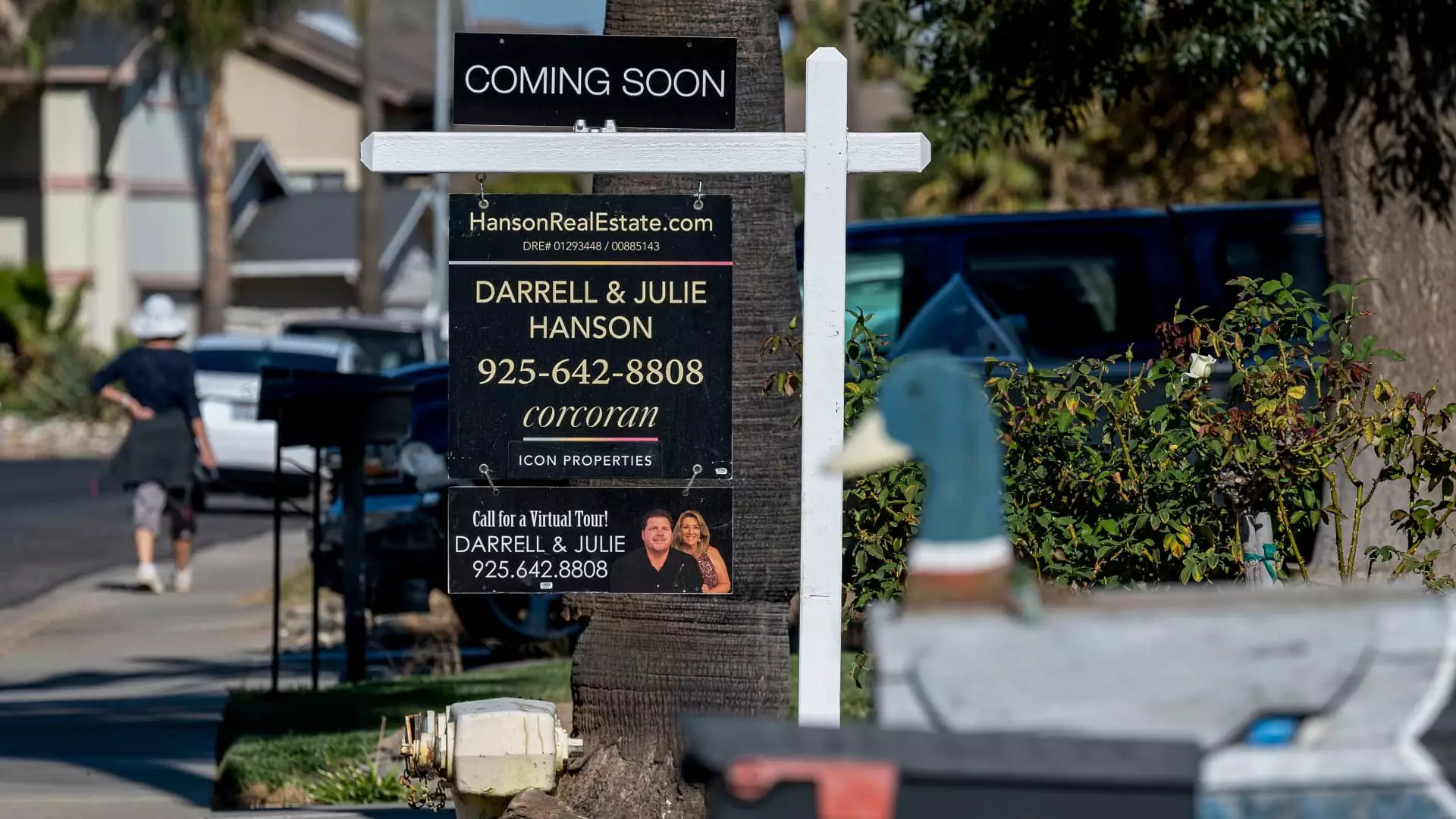In the wake of a series of fluctuations in financial markets, mortgage rates have seen a continued upward trend, reflecting investors’ reactions to economic forecasts under a Trump administration. Recent reports indicate that the mortgage market has momentarily stabilized, as total application volumes remained nearly unchanged, registering a nominal increase of 0.5%. Despite this modest uptick, it is the first indication of rising demand in the past seven weeks, signaling a potential shift in market sentiment.
As of last week, the average interest rate for a 30-year fixed-rate mortgage reached 6.86%, a rise from the previous week’s 6.81%. Adjustments in points, which account for origination fees, also shifted, now standing at 0.60 compared to 0.68. This illustrates that, while borrowing costs are increasing, lenders are making slight concessions that might ease financial pressures on prospective homeowners. According to the Mortgage Bankers Association’s deputy chief economist, Joel Kan, this increase in rates is primarily driven by surging Treasury yields as the market grapples with the political landscape post-election.
The refinancing segment of the mortgage market has been particularly affected by these fluctuations, dropping by 2% to its lowest levels since May. Despite this decline, refinances remain significantly higher—up 43%—compared to the same time last year, when rates were considerably higher. This discrepancy highlights how current rates, while higher than they were last week, are still relatively favorable compared to the past yearly trends.
On a brighter note, applications for home purchase mortgages rose by 2%, indicating a resilient demand. Compared to the same week last year, applications are up by 1%, suggesting that while the cost of borrowing is climbing, buyers are still motivated to pursue home purchases, albeit in a challenging market characterized by escalating home prices and limited inventory. Kan points out that loans backed by the Federal Housing Administration (FHA) and the U.S. Department of Veterans Affairs (VA) are witnessing growing application numbers, with increases of 3% and 9%, respectively. This trend reflects a shifting emphasis towards supplementary loan programs as traditional financing routes become less appealing.
Looking ahead, the mortgage market remains on edge as it navigates the complexities of ongoing election-related turbulence. Matthew Graham, COO at Mortgage News Daily, emphasizes that this volatility encompasses a myriad of factors, primarily tied to anticipated fiscal policy adjustments in the near future. As financial markets strive to find stability amidst these changes, borrowers can expect further fluctuations in mortgage rates, making it essential for them to remain informed and ready to act when conditions align favorably.
While mortgage rates are rising, the interplay of lower rates compared to last year, coupled with persistent high home prices and limited supply, creates a complex environment for homebuyers and refinance applicants alike. As the market continues to adjust to political and economic influences, stakeholders will need to remain vigilant to navigate the shifting landscape effectively.

